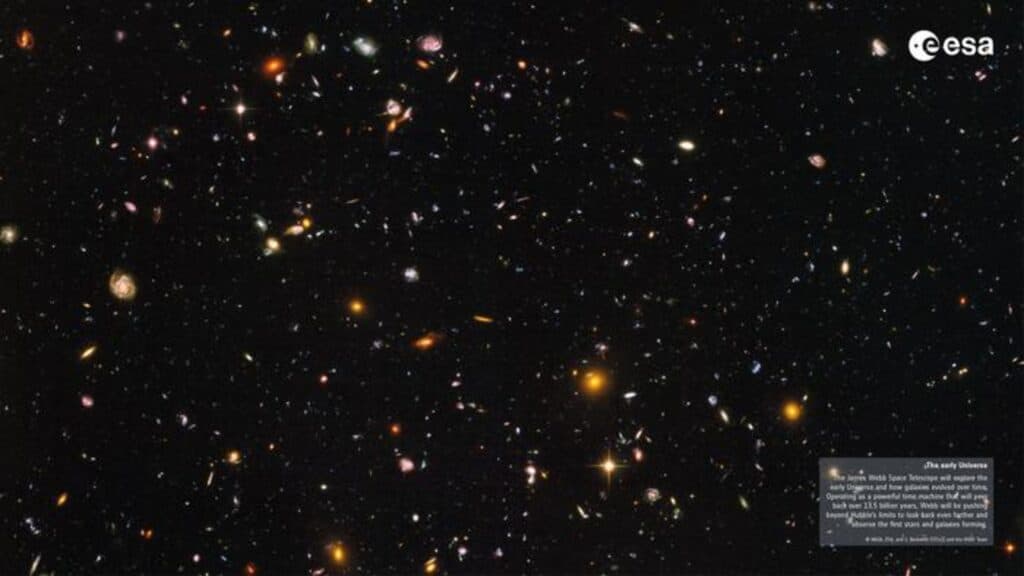A cutting-edge computer simulation is shedding new light on our understanding of early universe formation. This work, known as the “Renaissance simulations,” closely matches observations made by the James Webb Space Telescope (JWST) and provides valuable insights into the cosmos.
The Webb Telescope, launched into space with the mission of peering deep into the universe, initially left scientists puzzled. Early observations hinted at a discrepancy in our understanding of how galaxies formed in the early universe. These initial findings suggested that the first galaxies studied by the JWST were brighter and more massive than theoretical predictions had anticipated.
However, researchers from Maynooth University in Ireland and the Georgia Institute of Technology is providing clarity to this cosmic mystery. Their work demonstrates that the observations made by JWST are consistent with theoretical expectations, thanks to the innovative Renaissance simulations.
What are the Renaissance simulations?
The Renaissance simulations are highly advanced computer models designed to mimic the process of galaxy formation in the early universe. They are capable of resolving the tiniest dark matter clumps and tracking their evolution as they coalesce to form dark matter halos. These halos eventually become the host environments for the types of galaxies we observe today.
The simulations can also simulate the birth of the very first stars in the universe, known as Population III stars. These ancient stars are believed to be significantly more massive and brighter than their contemporary counterparts. By modeling their formation, the researchers can gain valuable insights into the early universe’s dynamics.

Crucial Insights and Future Research
“We have shown that these simulations are crucial in understanding our origin in the universe,” says study lead author Joe M. McCaffrey, a PhD student at Maynooth’s Department of Theoretical Physics, in a media release. “In [the] future, we hope to use these same simulations to investigate the growth of massive black holes in the early universe.”
“The JWST has revolutionized our understanding of the early universe,” notes Dr. John Regan, associate professor at Maynooth’s Department of Theoretical Physics. “Using its incredible power we are now able to glimpse the Universe as it was only a few hundred million years after the Big Bang – a time when the universe was less than 1 percent of its current age. What JWST is showing us is that the young universe was bursting with massive star formation and an evolving population of massive black holes. The next steps will be to use these observations to guide our theoretical models – something which up until very recently was simply impossible.”
The study is published in The Open Journal of Astrophysics.











